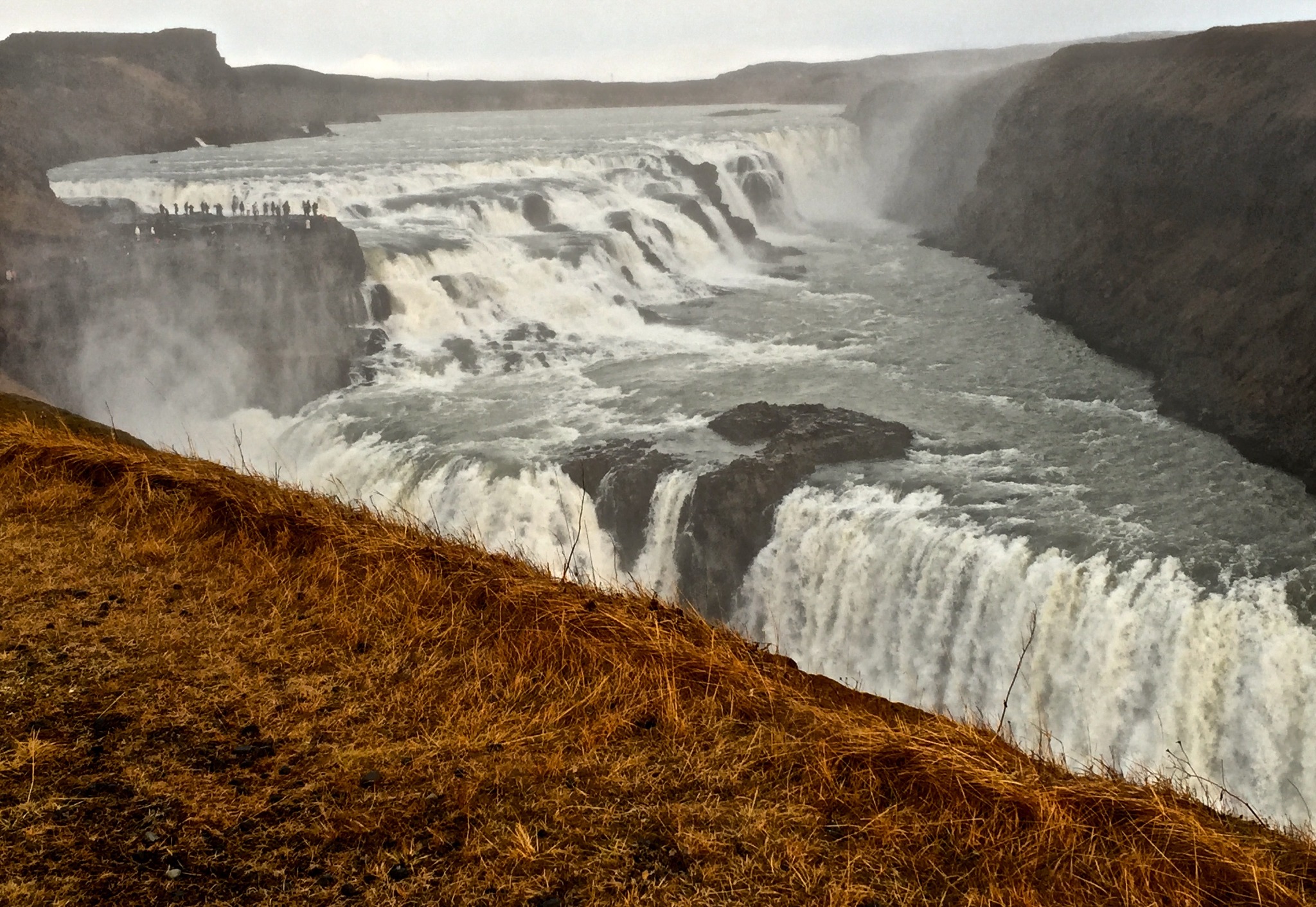
Finding Warmth in the Icelandic Winter
I landed at Keflavik International Airport at 7am, the day after Thanksgiving 2014. Leaving the impeccably modern terminal, I was greeted with pitch darkness and a blustering, horizontal rain. I followed a British family out into the gale, along with the shuttle bus driver that would take us to the rental car outlet.
"Welcome to lovely Iceland!" the driver shouted over his shoulder.
Iceland in November probably does not figure into most people's bucket lists. During the endless daylight of summer, this large, sparsely populated country has long been a popular destination. Its breathtaking vistas, geothermal spas, and unusual sense of isolation appeal to nature lovers and photographers.
Recently, crowds of sightseeing coach bus tourists have also begun to descend, smartphones at the ready. So many have begun to descend, in fact, that it is creating some stressors on infrastructure and housing costs. Mixed cultural sentiment about this boom in tourism has sparked public policy debates.
Still, Iceland's is a proud culture, and most would tell you they are grateful for the attention being drawn from around the globe. While technically considered a European country, Icelanders ruthfully joke about being left off of many maps of the European continent. It is, all the same, a happier, more peaceful, safer and greener nation than almost any on earth except for its Nordic partners.
But what does it offer the traveler, and why should you not fear the darkness of this time of year?
In essence, no matter what time of year, Iceland offers you the ability to drive for hours, pull off the road, walk into an expansive field surrounded by mountains and glaciers, and wonder if you're the first to ever stand in that exact spot.
You could also go snorkeling between two continental plates, drive a modified jeep across a glacier, camp out under the night sky watching the aurora borealis, or take in countless angles of scenery so surreal that it feels like you're on an alien planet. The extremes of nature, and the ease of finding yourself someplace that's at the limits of human habitability - these are, themselves, the selling points.
The suggestion that you book in the late autumn or winter has to do with the impossibility of certain activities during sunnier seasons - you won't see the borealis during times like July, when the sun is still up past midnight.
Still, this is a country with a lot of activities on offer in the summer season, as well, including the extended daylight that makes more efficient sightseeing possible. Don't forget its size, however. I told the bartender at 73 - a restaurant in Reykjavik - that I wanted to come back in the summer sometime and drive around "the whole country."
To this, she replied, "how many weeks will you set aside for this?" - Point taken.
I would recommend that you do what I did, and rent your own car. From that point on, do not overthink things. Pick a direction and forge your path. Major roads are all paved, but keep in mind interior routes do tend to close down during the winter and require 4-wheel drive, off road types of vehicles.
This is key, because making the most of Iceland means branching away from cosmopolitan creature comforts. If your goal is merely to visit Reykjavik, you are missing the point. Keep in mind the population of the entire country is only 330,000, with 2/3rds living in the Reykjavik area - the true adventure is to be found beyond those boundaries.
However, Reykjavik is still a charming and quaint little city. There nice dining, fascinating and colorful architecture, distinct walkability, and 2 or 3 days of notable attractions. These include the Hallgrimskirja church, which has a scenic viewing platform, and - on the opposite vibe - the Icelandic Phallological museum.
This is a quirky and brilliant diversion that displays, bear with me here, a plethora of penises from across the animal kingdom. More than 200 species are featured to be exact, everything from a common house mouse to the blue whale. The visit, for most people, does not take longer than 45 minutes before you've probably gotten the point, and begun to form grievances about your high school biology curriculums. I recommend buying something from the (obviously) lucrative gift shop. I chose a wooden bottle opener.
If you're only in the country for a few days, and basing yourself in Reykjavik, you would be wasting a trip without driving the famed Golden Circle Route. This trek takes you to three notable sights that are within an easy day's roundtrip from Reykjavik - Gullfoss waterfall, Thingvellir national park (where they first formed their parliament almost 1,000 years ago!), and a field of geysers at Haukadalur that erupt like clockwork.
The ever popular Blue Lagoon geothermal spa accedes to the top of most lists of recommendations; but, while I went there, and had a good time, keep in mind there are less touristy thermal swimming options. Some of these are within Reykjavik itself, and others are dotted across the nation. Do your research, if the geothermal swimming experience is on your list of to-dos.
When I first settled into that rental car, prepared to drive 45 minutes to my hotel in Reykjavik, the weather initially had me terrified I'd made a dreadful mistake. In the end, the six days I spent in this beautiful and one-of-a-kind country were life-affirming in a personal and poetic way. If you buck the trend and make an off-season trip to the country yourself, you will discover your own unique magic.
Post a comment